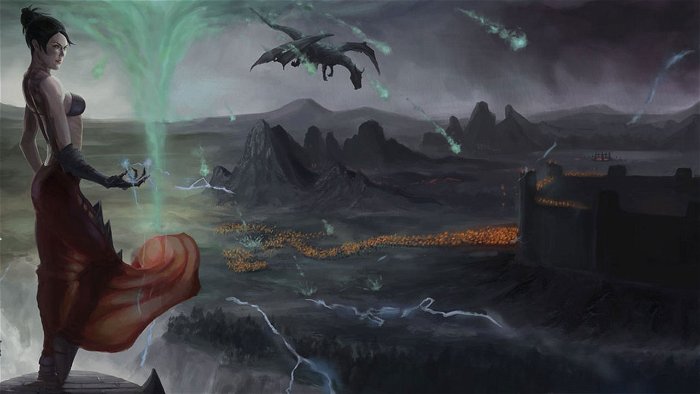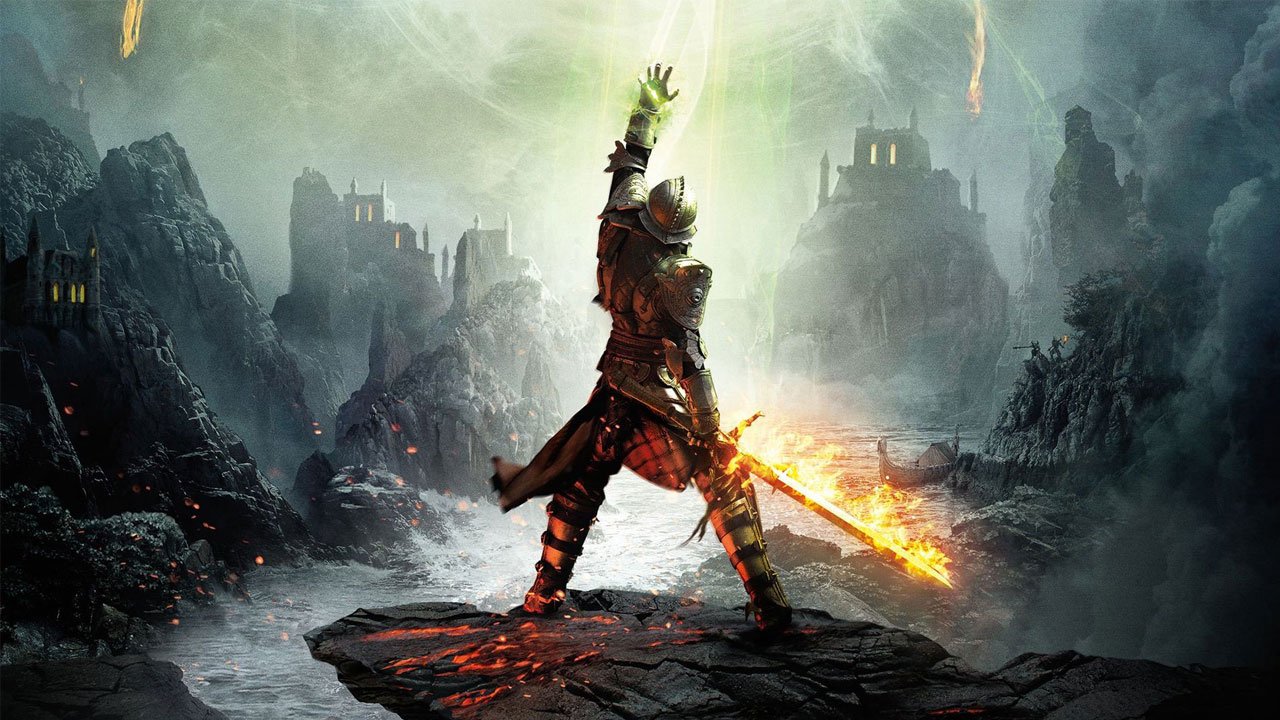In many ways, Dragon Age: Inquisition is what many fans were hoping for with Dragon Age II and didn’t get. After the design and narrative experimentation of DAII, BioWare plays it safe with Inquisition and gives fans what they expect. In traditional BioWare fashion, there are a few main story missions, punctuated by a lot of side-quests before closing with an explosive finish. This classic structure is heavily buttressed by the massive, massive scale of the game, however.

Like Dragon Age: Origins, players travel to different regions of the world, although in this case, duties are split between the two countries of Ferelden and Orlais. These regions are all huge, with a legion of side-quests and collectathon activities to undertake in addition to campaign missions. In many cases, these regions are completely optional, and, despite their huge size, don’t require players to visit them at all, so it’s easy to see how the game could take well over a hundred hours to complete for those that want to see everything. None of these regions by themselves is as big as Skyrim from Elder Scrolls V, but collectively they give that land a run for its money and have much more diversity, including deserts, bogs and genteel cities. Like Skyrim, they have all manner of dungeons, caves and side-quests tucked away in their nooks and crannies, so explorers will have a field days discovering all the things BioWare has scattered across these big chunks of real estate.
The actual RPG systems have also gotten a bit of an overhaul, and for the most part, they’re even more complex, but not difficult to use. The more action-minded can simply ignore this aspect, as it’s possible to win through simply leveling characters and picking skills. But there’s an elaborate crafting system and spy/military network game at work that opens up a wealth of possibility—and even greater power—for those willing to embrace these systems. By collecting schematics and appropriate materials, players can craft potions, armor and weapons as well as accessories that upgrade those items. Change the components you use and you change the stats, so if there’s a shield or bow you particularly like the look of, just getting the right crafting components will let you build and upgrade it to match in stats whatever rare loot you might find. The spy/military game is necessary to acquire “power” the in-game currency used to unlock story missions, but beyond that, sending out agents or soldiers into the land can also open up new areas to explore or uncover rare weapons and other items that can greatly benefit you and your party.


The biggest thing to take note of with Inquisition, however, is the combat. This was a point of contention, as BioWare never quite got it right in either preceding game. The pseudo-turn-based antics of Origins felt clunky on consoles, needing the tactical view the PC version enjoyed. DAII, on the other hand, took things too far and made an action-y, button-mashy affair that stripped away much of the strategy. Inquisition finally strikes the right balance with a tactical view provides the level of coverage and command the Origins system needed, while still retaining the ease of use and efficient interface of the DAII combat system. Power leveling will allow action fans to simply brute force their way to victory, but strategists will feel a great sense of liberation—and possibility—in the newly tweaked strategic view. Players can now freeze time and issue specific orders to party members, sending tanks out to meet enemies head on, while mages create an ice barrier to freeze opponents, complemented by an arrow attack from rogues to provide additional damage from “shattering.” There’s an X-COM feel to how BioWare has approached combat, and it works extremely well, finally satisfying both action fans and tacticians.
Unfortunately, there’s one great big black mark that goes against all the fantastic things BioWare has going for Inquisition and that is the numerous bugs. During the review of this Xbox One version, auto-saves became corrupted, leaving only manual saves as the only way to save progress. Not a deal breaker, but it did mean several lost hours of progress. At unexpected times, menus could be called up, but commands couldn’t be issued, which sometimes meant that healing in combat couldn’t occur. Again, not a deal breaker. Also a particular agent in the spy/network component became unavailable for the remainder of the game when a bug kicked in that boosted a mission from three hours of real time to completion to over 12,000 hours. Again, not a deal breaker, but these numerous bugs—and others—impeded gameplay enough that it frequently interfered with the ability to smoothly play. Hopefully, these are addressed in the day one patch, because while none of them break the game, they certainly take a lot of the fun out of it.

If BioWare can fix the numerous bugs plaguing Dragon Age: Inquisition, then they easily have the first classic RPG of the generation. A compelling cast tromps through a suspenseful adventure, and many of the design issues that troubled the past games have been ironed out here for a must-play epic. People were afraid BioWare had lost their touch. Bugs aside, Inquisition proves they’ve still got it. The faithful have been rewarded for their patience, and the fearful can lay those fears aside. If you love RPGs, you need to own this game.






